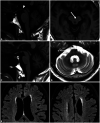Clinical Aspects of the Differential Diagnosis of Parkinson's Disease and Parkinsonism
- PMID: 35589315
- PMCID: PMC9163948
- DOI: 10.3988/jcn.2022.18.3.259
Clinical Aspects of the Differential Diagnosis of Parkinson's Disease and Parkinsonism
Abstract
Parkinsonism is a clinical syndrome presenting with bradykinesia, tremor, rigidity, and postural instability. Nonmotor symptoms have recently been included in the parkinsonian syndrome, which was traditionally associated with motor symptoms only. Various pathologically distinct and unrelated diseases have the same clinical manifestations as parkinsonism or parkinsonian syndrome. The etiologies of parkinsonism are classified as neurodegenerative diseases related to the accumulation of toxic protein molecules or diseases that are not neurodegenerative. The former class includes Parkinson's disease (PD), multiple-system atrophy, progressive supranuclear palsy, and corticobasal degeneration. Over the past decade, clinical diagnostic criteria have been validated and updated to improve the accuracy of diagnosing these diseases. The latter class of disorders unrelated to neurodegenerative diseases are classified as secondary parkinsonism, and include drug-induced parkinsonism (DIP), vascular parkinsonism, and idiopathic normal-pressure hydrocephalus (iNPH). DIP and iNPH are regarded as reversible and treatable forms of parkinsonism. However, studies have suggested that the absence of protein accumulation in the nervous system as well as managing the underlying causes do not guarantee recovery. Here we review the differential diagnosis of PD and parkinsonism, mainly focusing on the clinical aspects. In addition, we describe recent updates to the clinical criteria of various disorders sharing clinical symptoms with parkinsonism.
Keywords: Parkinson disease, secondary; Parkinson's disease; Parkinson-plus syndromes; Parkinsonian disorders; differential diagnosis.
Copyright © 2022 Korean Neurological Association.
Conflict of interest statement
The authors have no potential conflicts of interest to disclose.
Figures



References
-
- Kalia LV, Kalia SK. α-Synuclein and Lewy pathology in Parkinson’s disease. Curr Opin Neurol. 2015;28:375–381. - PubMed
-
- Sveinbjornsdottir S. The clinical symptoms of Parkinson’s disease. J Neurochem. 2016;139 Suppl 1:318–324. - PubMed
-
- Kalia LV, Lang AE. Parkinson’s disease. Lancet. 2015;386:896–912. - PubMed
-
- Menšíková K, Tučková L, Kolařiková K, Bartoníková T, Vodička R, Ehrmann J, et al. Atypical parkinsonism of progressive supranuclear palsy-parkinsonism (PSP-P) phenotype with rare variants in FBXO7 and VPS35 genes associated with Lewy body pathology. Acta Neuropathol. 2019;137:171–173. - PubMed
Publication types
LinkOut - more resources
Full Text Sources
Miscellaneous

